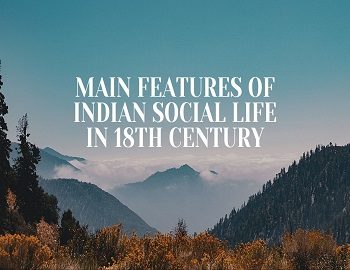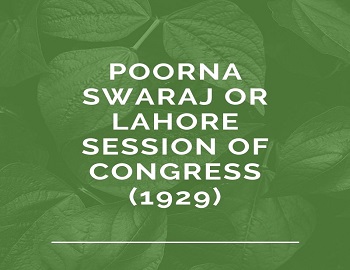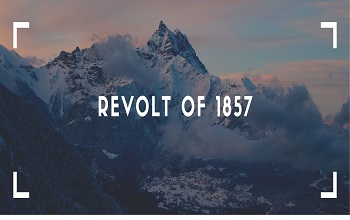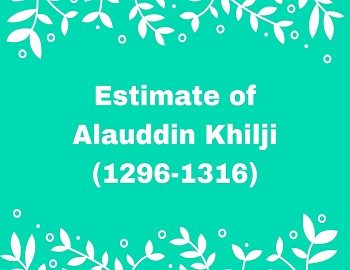Main Features of Indian Social Life in 18th Century:
The social condition of India in 18th century was quite different from the Indian society of today. The main features of the social life in the 18th Century can be stated as under-
- Joint Family System- There was a joint-family system in India. Father was the head of the family. He was greatly respected by all the members of the family.
- Strict Casteism- The Indian Society was badly caste-ridden. There was a feeling of high and low in society. The division of the Hindus into so many castes and sub-castes led to disunity and checked their progress. The same was the case with the Muslim society, which was suffering from tribal and social differences.
- Low Position of Women- In the 18th century the Indian women did not enjoy a good position in society. They were not considered at par with men. They were suffering from many social ills like Dowry, Sati System, Child Marriage, Purdah System and Polygamy. Widows were not allowed to re-marry. There was no arrangement for the education of women.
- Good Relations among the Hindus and the Muslims- Friendly relations between Hindus and Muslims were a very healthy feature of life in 18th century India. Even though the nobles and chiefs of the time fought each other incessantly, their fights and their alliances were seldom based on distinctions of religion. In other words, their politics were essentially secular. In fact, there was little communal bitterness or religious intolerance in the country. All people, high or low, respected one another’s religion and a spirit of tolerance and harmony prevailed. The mutual relations of Hindus and Muslims were those of brothers among brothers. This was particularly true of the common people in the villages and towns, who fully shared one another’s joys and sorrows, irrespective of religious affiliations. Hindus and Muslims cooperated in non-religious spheres such as social life and cultural affairs. The evolution of a composite Hindu-Muslim culture, or of common ways and attitudes, continued unchecked. Hindu writers often wrote in Persian while Muslim writers wrote in Hindi, Bengali and other vernacular, often dealing with subjects of Hindu social life and religion, such as Radha and Krishna, Sita and Ram and Nal and Damyanti. The development of the Urdu language and literature provided a new meeting ground between Hindus and Muslims.









Comments (No)